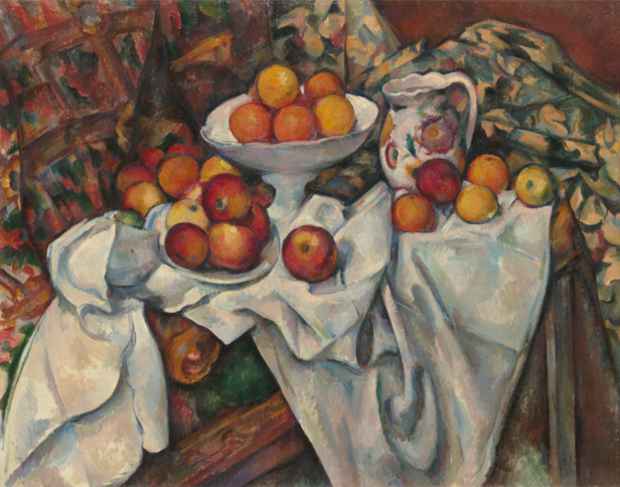CEZANNE: PARIS & PROVENCE
Paul Cézanne "Apples and Oranges" (1899)
A ‘town & country’ look at the “father of modern painting”
If you’re a foreigner living in Tokyo you probably know the feeling, the kind you get when you’re living in the big, fancy metropolis, but your roots are still back in the "old country," far, far away.
While it may drive some of us to occasional moods of sentimentality over a glass of imported beer or whisky, the feeling of never being quite at home and the sharp contrasts between hometown and home can also be a cerebrally stimulating experience. This is the thesis of Cezanne: Paris and Provence, a major retrospective of the post-Impressionist painter that brings 90 of his works together.
Cezanne is often referred to as the “father of modern painting” because his angular shapes and dense, patch-like brushwork form a convenient bridge between Impressionism and Cubism, which is generally regarded as the first unmistakably modern painting style.
Conventional views usually stress the artist’s rejection of Paris in favor of a life of comparative isolation in his home region of Provence in the deep south of France. This is usually presented as the foundation for the development of his unique style. But this exhibition instead focuses on his frequent comings and goings between Paris and Provence, and the role this may have played in his artistic evolution.
 |
| Mont Sainte-Victoire with Large Pine (1886-87) |
While it is suffused with a strong sentimentality that stems from his emotional attachment to Provence, it also avoids "provinciality" with a strong analytical technique that focuses on the shapes, colors, and composition rather than the emotional resonance of the objects and scenery. At times, it almost seems as if the artist is trying to appear "cool" and detached, which of course means he isn’t.
The degree to which this north-south axis provided the creative locus of Cezanne’s work may be debatable, but this interesting thesis at least gives this show something to bite against.
C.B.Liddell
Metropolis
12th of April, 2012





























Post A Comment
No comments :